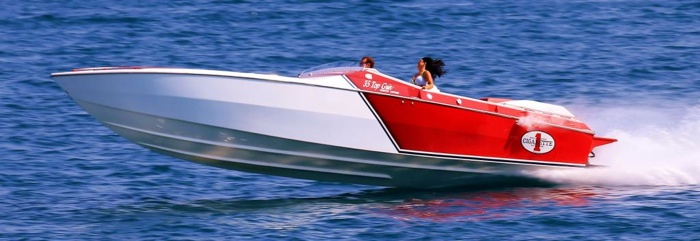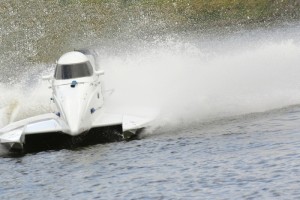 In the last year or so, I have spoken with more than a few shop owners about the marine engine market. At the onset of each discussion, I noticed three specific responses, the first being an enthusiastic interest. These owners recognize that this can be a lucrative market segment and are interested in how to get into or become more active in it.
In the last year or so, I have spoken with more than a few shop owners about the marine engine market. At the onset of each discussion, I noticed three specific responses, the first being an enthusiastic interest. These owners recognize that this can be a lucrative market segment and are interested in how to get into or become more active in it.
The second group has already been enjoying the fruits of their labors in this segment.
The third…well, their responses are usually a cross between seeing a ghost and discovering their identity has just been stolen. These reactions are typically born out of either having no idea where to begin, or from having an initial bad experience that left them feeing burnt. That’s unfortunate, as these shop owners are missing out on one of the most profitable niches in the engine building world.
For those unfamiliar with marine engines, there is a common misconception that these are highly unique devices. This simply isn’t the case. If you can rebuild an automobile engine, you can rebuild a marine engine. If you can build a solid, reliable drag or circle track engine, you can build, or rebuild, a marine performance engine. The key to success is understanding the subtle differences and being able to recognize the pitfalls.
Marine Engines
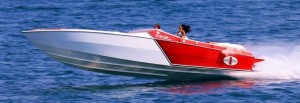
A performance boat will be spending hours at 5000-plus rpm at near maximum load.
There are three essential classifications of gasoline-powered marine engines. The first is your garden-variety pleasure craft (or workboat) engine. These are most commonly based upon the GM V6, small block and big block offerings although there are a small percentage of Ford engines out there as well. The differences between these engines and what a builder might find in an automotive application are slight.
The second category is performance engines. These will almost exclusively be big block Chevy offerings; however examples such as the Ilmor V10 based on the Viper motor are out there as well. The majority of this market is dominated by Mercury Marine with offerings from Mercruiser and Mercury Racing. However, there are also several other marinizers and many “home brew” engines to be found. These engines are very similar to what you would find in the high-performance crate engine marketplace.
The third category is high-performance. These engines typically consist of premium aftermarket components and in most respects are full-on, cost-is-no-object racing engines.
Regardless of how you classify them, all marine engines share two specific and important attributes – service duty and operating environment. Unlike a typical automotive engine, marine engines spend their lives operating at higher rpm levels and at constant moderate to heavy load. Where a passenger vehicle might cruise at 65 mph at 20 percent throttle and rpms in the mid-teens, the family boat with a similar sized engine will be turning 3,500-plus rpm at 60-70 percent throttle.
A performance boat will be spending hours at 5,000-plus rpm at near maximum load. With these service duty requirements it’s easy to see where the need for quality components and precision tolerances come into play. The most unique attribute of marine engines however, is the operating environment. A gasoline-powered engine in a fully enclosed operating space brings with it a number of crucial safety considerations. If your part is simply refreshing a long block, there’s not much here for you to consider. But most successful builders are delivering a product start-to-finish, so it’s important to know the dos and don’ts.
The Dos and Don’ts
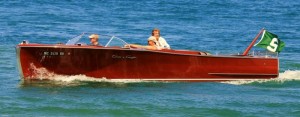
Fortunately, the U.S. Coast Guard has developed a comprehensive and all-inclusive set of requirements for powered watercraft, so a strong familiarity with these requirements is essential. On that list are things like certified carburetors, fuel pumps, intake flame arrestors and spark-proof starters and alternators. If you’re going to explore this market, this is must-know information.
Many times, the engine builder is going to be dealing with an OEM installation of engine and drivetrain. This is often a double-edged sword. The upside is that all the safety requirements are in place. You also have well-engineered and proven external systems for fuel delivery, electrical and cooling. The downside is that these systems present performance limitations, and in some instances you’ll be confronted with non-virgin installations.
It can’t be emphasized enough just how critical these safety considerations are. Just a few ounces of gasoline, vaporized in an enclosed engine compartment, can reduce a large boat to small smoldering pieces in an incredibly violent and lethal explosion. Something as simple as an electrical short can become a catastrophe. A little smoke becomes “where’s the fire extinguisher?” and “where are the life jackets?”
These issues in no way should concern the competent builder. Rather, these considerations serve multiple purposes. First, they’re strong differentiators for you and your services. Chances are, your competitors aren’t offering these “holistic services.” That gives you a leg up when competing for work. Additionally, making your customer safer provides you with the opportunity to sell more services and generate more revenue. Lastly, this makes for a fantastic litmus test. If you encounter a customer that can only afford the faster parts and not the safer parts, you most likely have ferreted out the type of problem customer you didn’t want in the first place.
In dealing with existing OEM installations, the builder must first determine if any sort of modifications exist. Most likely at one point or another, you will encounter some degree of “backyard engineering.” Most often this is the result of a lack of understanding of the function or need for the particular system, and sometimes it’s just plain bonehead thinking that “You don’t need this…” and “We can shed some weight…” In order to ensure a satisfied customer, it is crucially important to baseline the existing installation prior to tackling the project.
Just as with automobiles, these systems were developed with a performance level expectation. While some improvements are possible, noticeable increases in power typically require extensive modifications. The first, and most common marine mods, just as with cars, are intake and exhaust. As an example, two common platforms are the Mercruiser 415 MPI and the Mercury Racing 500/525. These two commonly seen powerplants are some of the most modified in the marketplace. Internally there is very little difference between these two engines, which are virtually identical to the GM Performance 502. Common mods to the 415 are replacement of the heavy and restrictive exhaust manifolds with either high flow manifolds or more commonly a water-jacketed header. This allows the use of a more aggressive cam profile. Yet now, you have intake restriction, which while easily solved with a single-plane manifold and a 4-barrel carburetor, you now land back into the arena of ensuring these components are marine-safe.
In our other example, the 500/525, common mods include cylinder head upgrades, stroker cranks and supercharger/intercooler kits. This additional power increases the demands on the craft’s other systems, including fuel delivery and its ability to cool the engine oil. Once again, rather than obstacles, these issues represent revenue generating opportunities. No longer are you simply boring and decking a block and fitting pistons and bearings. You’re providing a complete performance increasing solution.
Not only are there these “total package” performance enhancement opportunities, the successful marine builder can enjoy a steady stream of follow-on work from these same customers. The one constant with marine engines is regular maintenance. While a standard-performance marine engine might see full-rebuild intervals in the 400-600 hour range, performance engines can see as little as half that lifespan. And while their lower-performance siblings might survive on oil changes, the performance engine will need some serious hands-on at least once or twice between rebuilds.
Taking our example Mercury 525, engines in this range and above will need items like valve springs and lifters replaced and the valves freshened at 150-200 hours. Failing to do so is tempting fate and inviting catastrophic engine failure. This spells opportunity for the sharp builder. Not only is this a nice, ongoing revenue stream, this provides numerous opportunities to keep in touch with the client. An astute builder will offer his clients pre-season checkups to baseline engine performance as well as mid-season maintenance and season-end put-up. This value-added approach keeps the builder close to his customer and helps to maintain the relationship.
Unless he or she lives in South Florida, the typical boater has a limited boating season. Between other commitments and inclement weather, our average boater can’t afford to lose too many boating opportunities. A successful builder recognizes the value of keeping his customer’s boat in shape and as bulletproof as possible.
These business practices have an additional and beneficial side effect. They help the builder to identify his most profitable customers. If Customer A utilizes his whole menu of services, not only does he realize the attendant benefit, he’s got a spot at the head of the line in the event of a problem. It’s not tough to recognize that a handful of premium customers is more beneficial than a crowd of marginal ones. Provide your customer base an offering of high-quality, common sense, value-added services and give them the opportunity to patronize your business. The cream will rise to the top.
Now, we all know building a business comes one satisfied customer at a time. And we all have to keep the lights on while we’re building our dynasties, right? That means sometimes taking on work to keep the machines and the people working. Anyone that has survived a few years in business is usually pretty quick at weeding out the losing propositions that sometimes stumble across your doorstep. But there are a few pitfalls you can and should avoid in the process.
The Universal Truths of Performance Boating
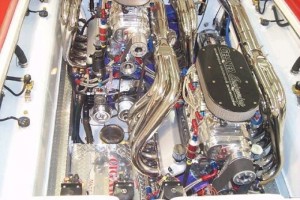
Number 1, no one’s boat goes as fast as they want it to. Number 2, virtually no one can afford to go as fast as they want to.
People with faster boats are one of your best selling tools. Getting passed regularly will drive customers to your doorstep, either for performance upgrades or to address the connecting rod protruding through their block. Either way, keep in mind that not everyone can keep up with their desires. Burying a customer financially in his boat is a quick way to lose them.
Sometimes it’s the builder’s job to bring the customer back to earth. The customer may be able to swing the engine job, but if his outdrives won’t take the power, he may be a season on the trailer and out $20K. Or maybe out of the hobby altogether. There are times that being the voice of reason is in both of your best interests. Many times, owners are simply unrealistic about their expectations. Just because their long block is capable of handling the add-on of a blower/intercooler package, there’s a good possibility this one mod will be a fraction of what’s needed. When you start adding up the costs of a complete fuel delivery system, upgraded exhaust, coolers, outdrive modifications or a complete drive upgrade, the tab begins to skyrocket. There are times where the best thing the builder can do for his customer is to advise less instead of more. The smart builder always considers the lifetime value of a customer. This isn’t a niche where you can survive on one-and-done. Your greatest ally is a happy customer and his word of mouth will drive pre-sold business to you.
Size Up Your Customer
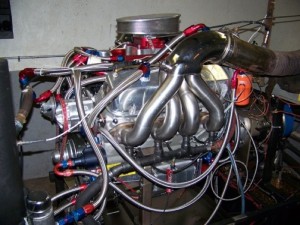
If your customer’s boat doesn’t match his story, keep asking questions. People that meticulously maintain their valuable possessions typically are good at taking responsibility for their own actions. Conversely, a customer whose boat looks “rode hard/put up wet” is likely to not follow your break-in and maintenance instructions. If you do move forward with the work, examine things closely. Chances are, you’ll find at least a few previous shortcuts or unresolved messes. If one of these things causes his new engine to pop, there’s no way he won’t blame you.
Communication is Everything
As in all businesses and industries, there are top-notch pros, marginal operators and a few downright thieves. Stories abound describing unscrupulous builders assembling engines with used or lesser parts. The best practices to follow include a thoroughly written description of what the customer is to receive, what timeline this will occur upon and what happens in the event of the unforeseen and an established pattern of communication.
Let the customer know how you will be keeping him apprised of progress. The best way to not have to spend your day on the phone is by emailing photos. When the parts arrive, send the customer a picture. Parts on the machine? Pics. Engine going together? Pics. This is going to lessen their need to call you repeatedly or pop in to your shop and interrupt your work process. It’s also going to prevent many questions from arising in their minds. Transparency makes for happy customers. It might sound like effort wasted when you could be finishing their project, but it’s the best time you’ll spend.
The Unexpected
Even on a straightforward rebuild, expect the unexpected. It would be more unusual than not to dig into a customer’s boat and not find a few other issues or deficiencies with the engine’s support systems. These range from deteriorating wiring and plumbing to structural damage and rot. While the vast majority of boats you’ll see are fiberglass, virtually all have plywood based structural reinforcements. The stringers and transom are difficult to inspect with the driveline in place. Just as with the other engines the builder sees, it isn’t until its opened up that you discover the block with three sleeves and a welded web, a crank that mags bad and heads with seat cracks. No one should ever leave the builder’s shop without hearing at least once about these possibilities.
Start-Stop Customers
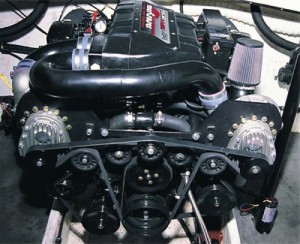
This is something that MUST be addressed in your initial discussions and quotation. Nothing is either more frustrating, or more profit killing than a customer that can’t keep up with a payment schedule. The customer doesn’t want to prepay the job and you can’t blame them. Conversely, you don’t want to do one-off work on your own nickel and wait until the end to be paid. So, many shops work on a deposit with progress payments. It’s imperative that your customer be made aware of how stopping mid-stream affects your ability to work. Once stopped, someone else’s work needs to progress. Mr. Start-stop doesn’t understand why his job doesn’t just re-start the day he scrapes up his next payment. So your customer either goes to the end of the line or he picks up what he’s already paid for. And you’ve made an enemy. A brief conversation can all but eliminate this issue.
Control the Project
There are a couple of ways of doing this. The first is to do the whole job. If all you do is machine work and assembly, you’re leaving a bundle on the table. Sometimes it’s a necessity. A great source of build/rebuild work is marinas. Most likely the owner will be their customer and they yours. Work with them. Don’t drop the long block on their dock, dig in and work with them on the install. It’s a great way to learn. Ideally you’ll have a dyno. Marine engines are tough to tune on the water. It is so much easier to pre-rig everything and do the break-in and tune on a dyno, then drop the engine into the boat. Videotape the dyno session. This isn’t just a value-added service that ends up as a line item on your invoice, it’s also the best insurance you can get. You have had the opportunity to do the final quality control check on your product and you have proof it was in 100 percent proper order when it left your facility. If you don’t have a dyno, find someone that does who is willing to rent time on it.
Finding Customers
As silly and hokey as it sounds, the best advice is to go where the boats are. Marinas are a great first stop. Of course, every one of them already has someone else they’re working with. But chances are not all of those relationships are rosy. And every one of them needs a No. 2 supplier in the event the No. 1 stumbles or is just overbooked.
Another approach is to frequent where the boats go. If there are local boating events, get involved. There are oftentimes frequent raft-ups and waterfront establishments you can visit. Pass out some can cozies or keychain floaties with your shop name on them.
In reality, this is a market niche you don’t have to dive into. But if you want to be successful, you do need to recognize and understand the difference these engines and their applications present. Begin working with marinas and start your learning process there.

